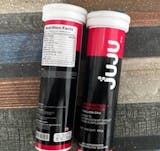In the past few years, hip circle exercises have become more popular because they work well to tone and strengthen the muscles in the lower body. For these exercises, you wrap a resistance band, also called a “hip circle,” around your legs to create resistance as you move. Hip circle exercises can help you tone and shape your lower body, improve your balance and stability, and even ease pain and discomfort in your hips and knees if you do them regularly. This blog will talk about the benefits of hip circle exercises, the different kinds of exercises you can do, and how to get the most out of your work out.
IN THIS ARTICLE
07. Conclusion
What Are Hip Circle Exercises?
Hip circle exercises are body exercises that work the hip, glute, and thigh muscles. They are done with a resistance band called a “hip circle” or “mini band.” In strength training program , these exercises are often used to build lower body strength and improve overall fitness.
Hip circle exercises usually involve doing a series of moves like squats, squat jump, walking lunge, donkey kicks, lunges, and lateral band walks while wearing a resistance band around the thighs or ankles. The band adds more resistance to the moves, making them harder and helping to engage and work the lower body muscles.
Hip bands are great because they are so easy to use. You can take them anywhere because they are small and light. Hip circle band allows you get a good workout and burn fat, as long as you do it the right way.
Hip circle exercises can be done by people of all levels of fitness, from those who are just starting out to those who are very fit. You can also easily change them by altering the resistance of the band or the intensity of the moves.
DIFFERENT TYPES OF HIP CIRCLE EXERCISES
Incorporating a variety of hip circle exercises into your workout routine can help you achieve a well-rounded lower body workout. Here are different types of hip circle exercises:
Banded Hip Circle Walks
Just above your knees, wrap a resistance band around your thighs. Put your feet shoulder-width apart in a quarter-squat position. Move to the right in small steps while keeping the band tight. Do it again in the opposite direction. This exercise works your glutes and the muscles on the outside of your thighs.
Fire Hydrant Hip Circles
Start on all fours with your wrists directly under your right shoulder and your knees directly under your hips. Lift your right knee out to the side, then turn your right leg in a circle while keeping your knee bent. Bring your leg back down to where it was at the beginning. Do this again with your left leg. This exercise works your glutes and the muscles on the inside of your thighs.
Glute Bridge with Hip Circle
Lay on your back with your knees bent and your feet flat on the ground. Place the hip circle just above your knees, around your thighs. At the top of the move, squeeze your glutes as you lift your hips up towards the ceiling. Hold for a few minutes at a time, then lower your hips back to the ground. This move works your buttocks.
Lateral Band Walks
Wrap a band of resistance around your ankles. Place your feet hip-width apart take a small step to the right with your right foot. Keep the band tight as you step forwards with your left foot. Do it again in the opposite direction. This exercise works your glutes and the muscles on the outside of your thighs.
Clamshell Hip Circles
Lay on your side with your knees and hips bent at an angle of 90 degrees. Place the hip circle just above your knees, around your thighs. Keeping your feet together, lift ones top knee up towards the ceiling, and then move your leg in a circle. Bring your legs back down to where it was at the beginning. On the other side, do it again. This exercise works your glutes and the muscles on the outside of your thighs.
Seated Abductions
An abduction, in which you push your knees and legs out away from your body’s centre, can help you finish your workout with a stronger burn in your glutes. Set up the band just like you would for regular hip circle squats.
Monster Walks
Monster walks are like lateral walks in that way. But instead of moving from side to side, you’ll move forwards and backwards. These are common slingshot hip circle exercises, and there’s a good reason for that. They work the glute muscles and are a good way to warm up all the muscles in the lower body.
Before you try any hip circle exercises, make sure you have a pre workout warm up and pay attention to your body to avoid getting hurt. Start with a band that doesn’t offer much resistance, and as you get stronger, gradually add more resistance.
Benefits of Hip Circles
These Hip Circles are good for both new athletes and experienced ones. Here are ways that using Hip Circles in your different training like chest exercises, ab exercises, and triceps workout ; can help you:
Improving squat depth
Using Hip Circles as a warmup routine for squats can help you go deeper into your squats. This is great if you have trouble going below parallel when you squat.
For a deep squat, you need to be able to easily externally rotate your hips, which means you need to be able to rotate your thighs outwards.
By doing a drill like a hip-banded squat as part of your warm-up, the band around your knees forces you to be able to rotate outward when you reach the bottom of the squat, which makes it easier for you to squat deeper in the future.
Improving knee tracking over feet
If you can’t get your knees over your feet well, you might hurt yourself or feel pain. It also means that your hip bones and back are likely not in the right place.
If your knees tend to cave in when you squat or deadlift, you can easily use Hip Circles/Hip Bands as a tactile external cue for your knees. Having the bands around your knees makes you think about pushing your knees against the bands.
It’s important to remember that you only need to push your hips out so far that they are even with your feet. You don’t want your knees to be outside of your feet.
Isolating glute training
Powerlifters use their glutes a lot when they squat and deadlift. This makes them very important muscles. Most of the time, powerlifters train their glutes on their own to build muscle.
Some common glute exercises may get boring and easy for powerlifters to do after a while. When you add Hip Circles or Hip Bands to your current glute exercises, you add resistance, which makes the glutes work harder. This is a good way to make the same exercises harder and harder without changing the movement or the number of sets and reps.
Improving hip stability
With the hip circle or hip band, you can do strength activities and movement drills to make your hips stronger and more stable. For good posture control, you need hips that are stable.
Move drills that involve moving in different directions test the hip muscles’ ability to stay stable under a variety of stresses.
Improve ankle stability
You can strengthen your ankles by putting hip circles or hip bands around your ankles. During squats and deadlifts, some people have trouble keeping their foot and ankle stable. During the exercise, the person’s ankles might give way.
The hip circles or hip band can be used to make your feet and ankles turn outward and turn inward so you can better control your force of gravity when you squat and deadlift.
Proper Form During Hip Circle Exercise
To perform this exercise properly, whether you are in a gym session or just doing home work out, you should do it right from the start position up until the end.
Relax your body, keep your head facing forwards, tighten your core muscles, and take deep, steady breaths. Start with small circles and make them bigger as you go. Make sure your hips are always at the same level with the floor.
Stand tall and put your feet hip-width apart. Keeping your hands in front of your tummy, pull your right knee up until it is parallel to the floor. Then pull the knee out, which will open up your hip. Turn around and do the same thing on the other side.
Muscles Worked During Hip Circle Exercises
Hip circle exercises work the glutes, hips, and thighs, among other muscles in the lower body. Most of the time, lower body workouts such as this, is perform during leg day. Here are some of the muscles that hip circle exercises work:
- Gluteus Maximus: This is the biggest muscle in the buttocks. It moves the thigh away from the body, which is called hip extension. This muscle is worked by exercises like fire hydrants and glute bridges that involve glutes activate.
- Gluteus Medius: The gluteus medius is on the side of the hip. It helps with hip abduction, single leg glute and squat position, which is when the thigh moves away from the body. This muscle is worked on when you do side-lying leg lifts and lateral band walks.
- Adductors: These muscles are on the inside of the thigh and move the thigh towards the body. The adductors are worked on by exercises like clamshells and seated leg adductions, which work the hip circle.
- Quadriceps: The quadriceps are a group of muscles on the front of the thigh that bend the knee. The quadriceps are worked on by exercises like squats and lunges that work the hip circle.
- Hamstrings: The hamstrings are a group of muscles at the back of the thigh. They bend the knee and straighten the hip. The hamstrings are worked on by exercises like deadlifts and hamstring curls, which work the hip circle.
Generally, hip circle exercises are a great way to work out a lot of the lower body’s muscles and get stronger, more stable, and more mobile.
Training Tips and Techniques
Hip circle exercises can help you get stronger and more stable in your lower body, but you need to do them right to get the most out of them and avoid getting hurt. Here are a few tips and tricks to remember:
- Engage your core. Throughout the exercise, keep your abs and glutes tight to stay stable and protect your lower back.
- Keep your shoulders back and your chest up to keep your back from rounding, which can hurt you.
- Keep your knees in line with your toes. During the move, make sure your knees don’t cave in or out, which can put stress on your knees and hips.
- Control your movement: Move slowly and carefully, and don’t make any sudden or jerky moves that could hurt you.
- Use the right amount of resistance. Choose a resistance band or weight that gives you a challenge without letting you lose your form.
- Warm up first: Before you start any workout, you should do some light cardio and dynamic stretching to get your muscles ready. This will keep you from getting injured unexpectedly and can also help you avoid muscle pains.
By using these tips and tricks, you can get the most out of your hip circle exercises and reduce the chance of getting injured while achieving your goals.
Frequently Asked Questions
Are hip circle exercises suitable for all fitness levels?
Hip bands are easy to use and can be incorporated into any workout, no matter how fit you are or how long you’ve been working out.
How often should I perform hip circle exercises?
Each of these workouts should be done once a day to keep the hips strong and flexible. When the exercises start to feel easy, you can do two to three sets of each one to challenge your hip muscles and make your hips stronger and more flexible.
How can I make my hip circles easier?
Relax your body, keep your head facing forwards, tighten your core muscles, and take deep, steady breaths. Start with small circles and make them bigger as you go. Make sure your hips are always at the same level with the floor.
What precautions should be taken at the beginning of the exercise?
Always warm up before exercise and cool down afterwards to avoid strains and sprains. Take breaks during the activity. Don’t exercise on an empty stomach.
Conclusion
Hip circle exercises are a versatile and effective way to work your lower body muscles, improve your balance, and improve your overall fitness. The hip circle exercises can be a great addition to your fitness routine, whether you want to get stronger, become more flexible, or just change things up. You can get great results and feel very confident in your body’s abilities if you vary your workouts, pay attention to proper form, and gradually increase the intensity and length of your workouts.
If you have any questions or concerns about adding hip circle exercises to your routine, you should always talk to a fitness professional. So, get your gym bag ready, grab your booty bands and give it a shot and start seeing the benefits for yourself.












